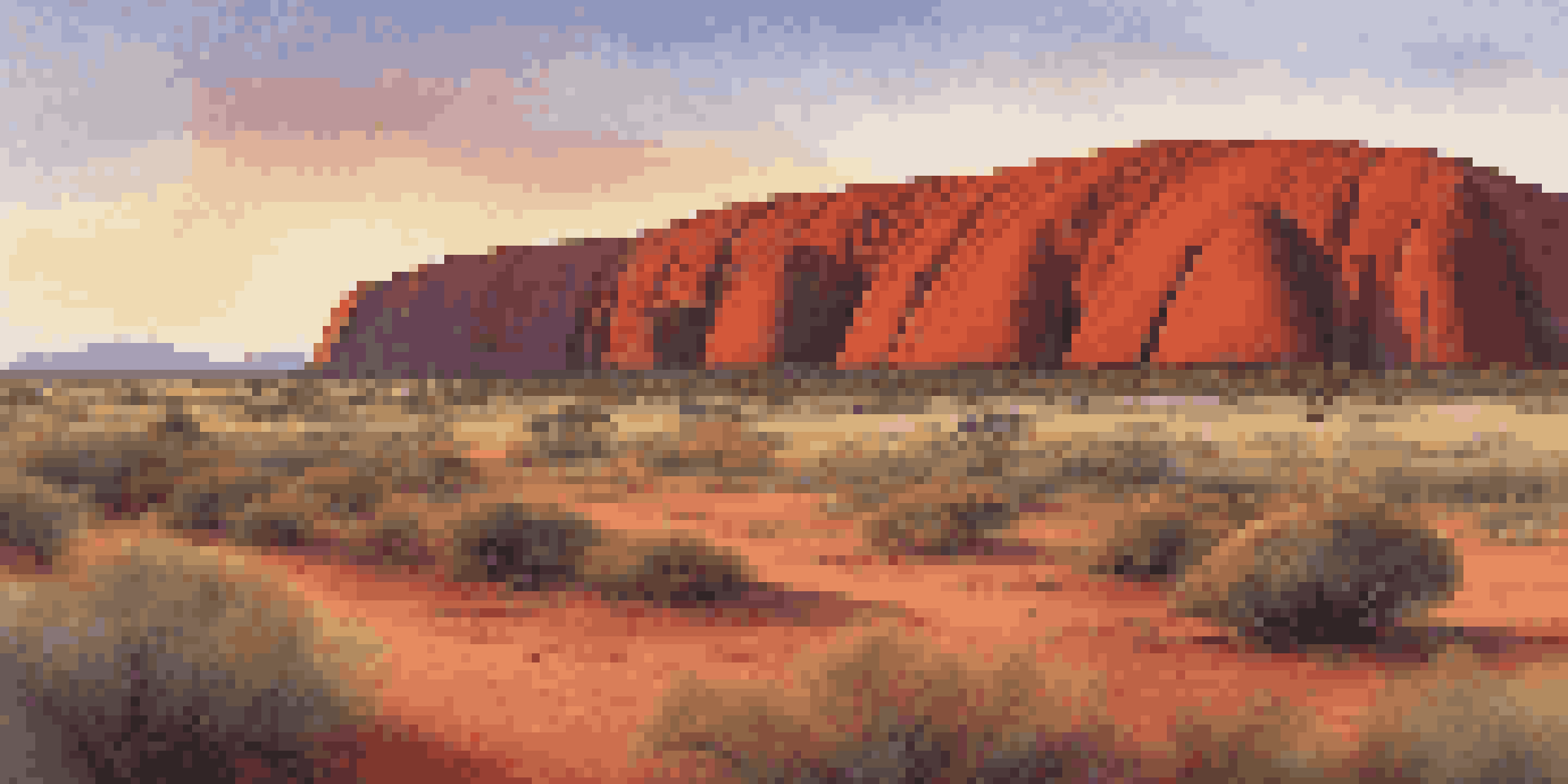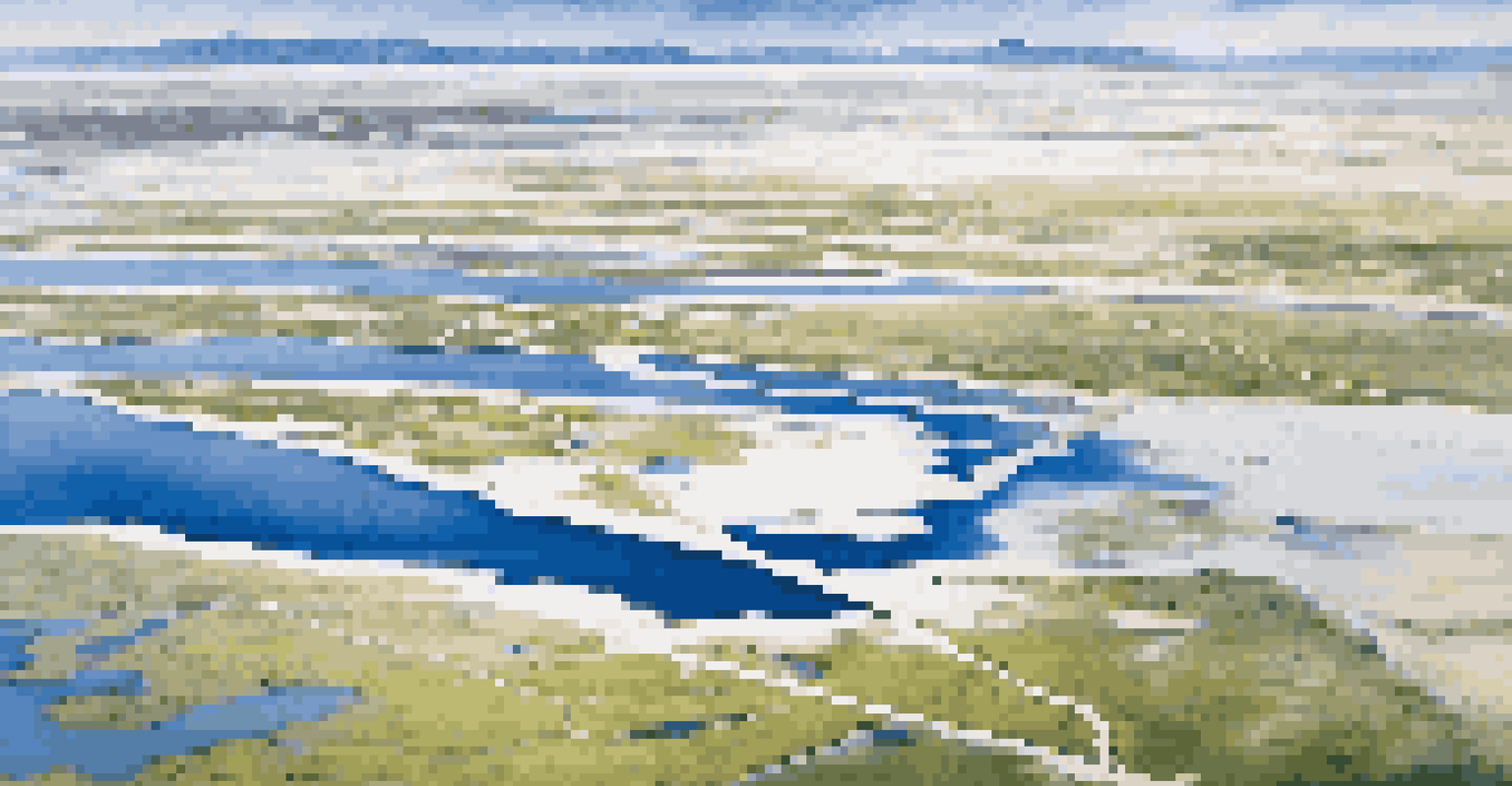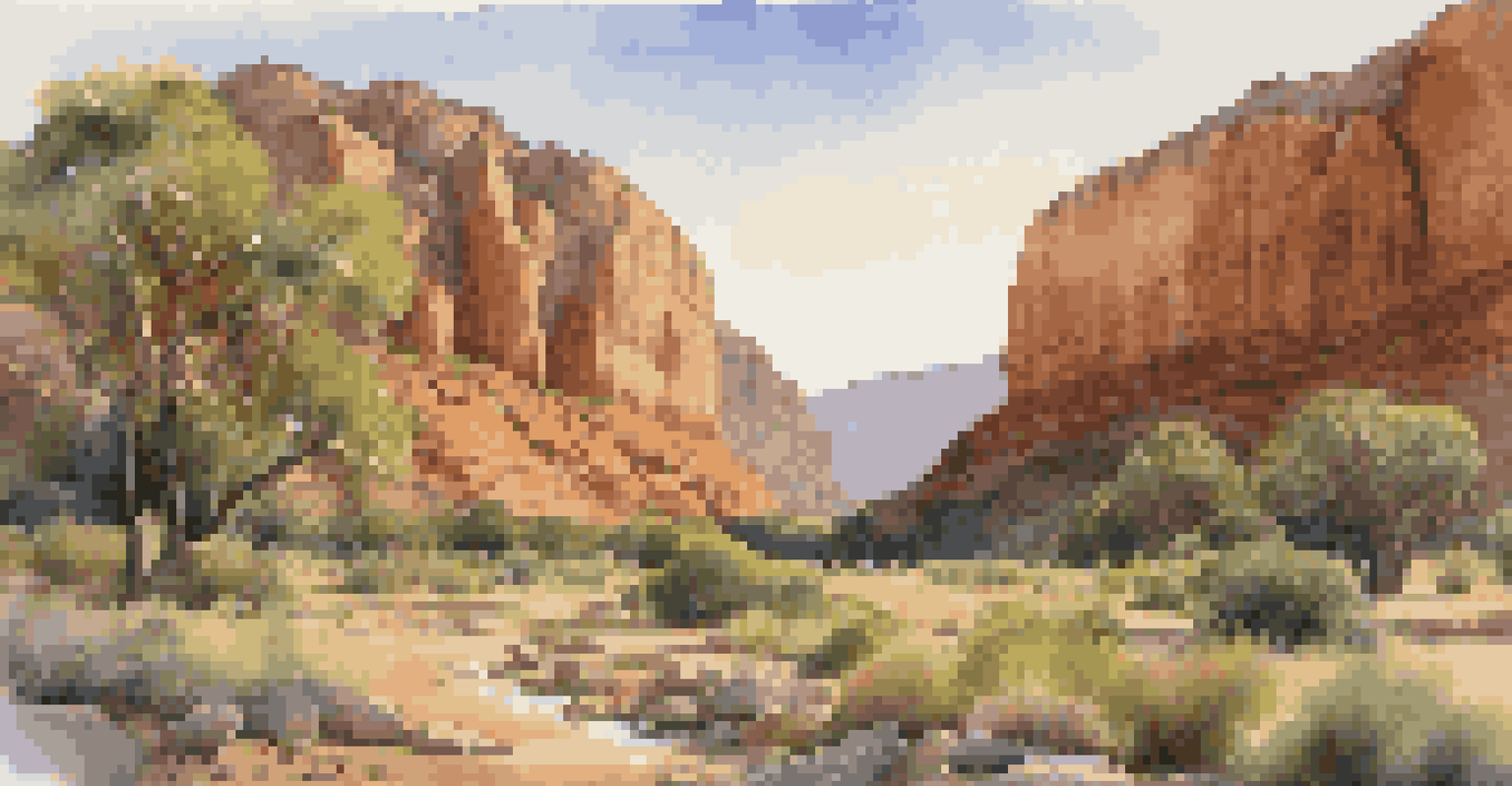Best Photography Locations in the Australian Outback

Uluru: The Iconic Heart of the Outback
Uluru, also known as Ayers Rock, is undoubtedly one of the most photographed landmarks in Australia. Its striking red hue changes dramatically with the light, making it a captivating subject at sunrise and sunset. As you capture its beauty, don't forget to explore the surrounding area, which is rich in Indigenous culture and history.
In every walk with nature one receives far more than he seeks.
The Field of Light installation nearby offers a unique opportunity to photograph thousands of colorful lights illuminating the desert landscape at night. This ephemeral art piece adds a modern twist to your traditional Outback shots, creating a beautiful contrast with the ancient rock formations.
For the best angles, hiking around Uluru is a must. The various lookouts provide different perspectives, showcasing the rock’s grandeur against the vast desert backdrop. Each photograph tells a story of this sacred site, making it a must-visit for any photography enthusiast.
Kings Canyon: Majestic Landscapes Await
Kings Canyon is a stunning location that boasts dramatic cliffs and lush vegetation, making it a paradise for photographers. The Rim Walk offers breathtaking views from the top, allowing you to capture the canyon's sheer scale and beauty. The contrast between the red rock formations and the green oasis below creates striking photographs.

As you explore the canyon, keep an eye out for the Garden of Eden, a permanent waterhole surrounded by palm trees. This natural haven is not only a great spot for wildlife photography but also provides a serene backdrop for capturing the essence of the Outback.
Uluru: A Photographic Wonderland
Uluru's stunning colors and surrounding Indigenous culture make it a must-visit for any photography enthusiast.
Visiting during the golden hour can enhance your photos significantly. The warm light casting shadows across the canyon walls adds depth and richness, turning your images into masterpieces of natural beauty.
The Olgas (Kata Tjuta): Unique Rock Formations
Kata Tjuta, also known as The Olgas, is a group of large, domed rock formations that present a different but equally stunning photographic opportunity. The contrast between the smooth curves of the rocks and the rugged Outback terrain creates a visually striking scene. Early morning or late afternoon light is perfect for capturing their vibrant colors.
Photography is the story I fail to put into words.
The Valley of the Winds walk takes you through these incredible formations, providing numerous vantage points for photography. As you hike, you’ll encounter breathtaking views that reveal the sheer size and scale of these ancient geological wonders.
Don’t forget to capture the vibrant wildflowers that bloom in the area, especially after rain. They add a splash of color to your images, showcasing the diverse beauty of the Outback landscape.
Alice Springs: A Gateway to the Outback
Alice Springs serves as a perfect base for exploring the Australian Outback and boasts its own unique photographic opportunities. The town is rich in history and culture, with several art galleries and historical sites that make for interesting subjects. The iconic Alice Springs Telegraph Station is a great spot to capture both architecture and natural surroundings.
The surrounding MacDonnell Ranges offer stunning landscapes for photographers. From the dramatic sunsets over the ranges to the stark contrast of the red cliffs against the blue sky, you’ll find countless opportunities to snap breathtaking shots.
Diverse Landscapes of the Outback
From the majestic Kings Canyon to the unique rock formations of The Olgas, each location offers breathtaking photographic opportunities.
Additionally, don't miss the chance to photograph local wildlife. Kangaroos and other native animals are often seen in the area, providing a delightful glimpse of the Outback’s rich biodiversity.
The Simpson Desert: A Sea of Sand Dunes
The Simpson Desert is a mesmerizing location filled with rolling sand dunes that provide a unique backdrop for photography. The vastness of the desert creates a sense of isolation, allowing you to focus on the beauty of the natural environment. Sunrise and sunset are magical times to capture the shifting colors of the sand.
Exploring the desert will lead you to discover unique patterns in the sand created by the wind. These textures can add depth and interest to your photographs, making them stand out in your portfolio.
Keep in mind that the desert can be harsh, so plan your photography sessions accordingly. Bring plenty of water and sunscreen, and enjoy the tranquility that this remote location offers.
Lake Ayre: A Stunning Salt Lake
Lake Ayre is one of Australia's largest salt lakes and offers a surreal photography experience. The vast white salt flats create an otherworldly landscape that contrasts beautifully with the blue sky. This unique setting attracts photographers looking to capture the beauty of nature in its starkest form.
Visiting during the wet season can transform the lake into a shimmering mirror, reflecting the sky above. This phenomenon creates stunning opportunities for aerial photography, as well as ground-level shots that showcase the lake’s expansive beauty.
Wildlife and Natural Beauty Await
The Outback's rich biodiversity, from the Flinders Ranges to Alice Springs, provides endless chances to capture stunning wildlife and landscapes.
Be sure to explore the surrounding wetlands, which are teeming with birdlife. The vibrant colors of the birds against the white salt flats make for captivating images that tell a story of life in the Outback.
Flinders Ranges: Rugged Beauty and Wildlife
The Flinders Ranges is a treasure trove of rugged landscapes, perfect for adventurous photographers. The ancient mountains and deep gorges provide a dramatic backdrop that enhances any photograph. The contrast between the earthy tones of the rocks and the lush green vegetation creates a visually striking scene.
Wildlife enthusiasts will also find plenty to capture here, from kangaroos to emus. Early mornings are the best time to photograph these animals in their natural habitat, as they are most active during this time.

Don’t forget to explore the area at different times of the day. The changing light can dramatically alter the mood of your photos, turning a familiar landscape into something extraordinary.
Coober Pedy: The Underground Town
Coober Pedy, known as the opal capital of the world, offers a unique twist on Outback photography. This underground town features homes and shops built into the earth, providing a fascinating subject for photography. The contrast of the underground lifestyle with the harsh desert environment is striking and tells a compelling story.
Be sure to visit the opal mines and learn about the mining process, which can add depth to your photographic narrative. The colorful opals themselves can also be a great subject for close-up photography.
The surrounding desert landscapes provide ample opportunities for capturing the stark beauty of the Outback. From the iconic breakaways to the sunset views over the desert, Coober Pedy is a photographer's dream.